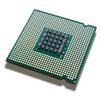Database Management Systems (DBMSs) are crucial for efficient data management and analytics, and are used in several different application domains. Due to the increasing volume of data a DBMS deals with, current processor-centric architectures (e.g., CPUs, GPUs) suffer from data movement bottlenecks when executing key DBMS operations (e.g., selection, aggregation, ordering, and join). This happens mostly due to the limited memory bandwidth between compute and memory resources. Data-centric architectures like Processing-in-Memory (PIM) are a promising alternative for applications bottlenecked by data, placing compute resources close to where data resides. Previous works have evaluated using PIM for data analytics. However, they either do not use real-world architectures or they consider only a subset of the operators used in analytical queries. This work aims to fully evaluate a data-centric approach to data analytics, by using the real-world UPMEM PIM system. To this end we first present the PIM Data Analytics Library (PIMDAL), which implements four major DB operators: selection, aggregation, ordering and join. Second, we use hardware performance metrics to understand which properties of a PIM system are important for a high-performance implementation. Third, we compare PIMDAL to reference implementations on high-end CPU and GPU systems. Fourth, we use PIMDAL to implement five TPC-H queries to gain insights into analytical queries. We analyze and show how to overcome the three main limitations of the UPMEM system when implementing DB operators: (I) low arithmetic performance, (II) explicit memory management and (III) limited communication between compute units. Our evaluation shows PIMDAL achieves 3.9x the performance of a high-end CPU, on average across the five TPC-H queries.
翻译:暂无翻译


